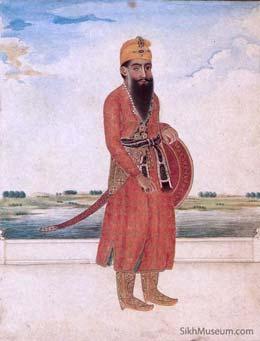Auction raises cautionary concerns

Sandeep Singh Brar,
Special to The Post
Canadian real estate developer Bob Dhillon’s recent purchase of the ‘sword of Maharaja Ranjit Singh’ at an auction last month for reportedly close to six figures has been making news lately and caused a lot of excitement among the Sikh community.
Over the past decade or so, the valuation of Sikh artifacts at auction houses around the world have gone through the roof, far exceeding the object’s estimated auction value. With great enthusiasm and euphoria among Sikh collectors, the auction houses have noticed and catered to this growing phenomenon.
The Sikh auction market is certainly hot, and therein lies a cautionary flag for potential investors and collectors. Which brings us to the current issue of the sale of a sword attributed to Maharaja Ranjit Singh by British auction house Mullock’s.
It was quite surprising to see a ‘sword of Maharaja Ranjit Singh’, such an important Sikh artifact, being offered by a third-tier auction house that normally deals with Sikh items worth a few hundred to few thousand dollars. One would expect the ‘sword of Maharaja Ranjit Singh’ to be auctioned by its seller at a more high profile international auction house like Sotheby’s or Christies to maximize its sale potential.
A careful reading of the Mullock’s auction catalogue description of the sword never states that the sword belonged to Maharaja Ranjit Singh and no origin is provided in the description connecting its past ownership to Maharaja Ranjit Singh or the royal court of the Sikh Kingdom. Fortunately there are a number of surviving examples with full provenance in various museum collections around the world. I know of four such swords, and I am sure there are a few more in other museums and private collections.
All of these surviving swords that belonged to Maharaja Ranjit Singh have one thing in common; they are bejewelled items of the highest craftsmanship imaginable, befitting a monarch. Maharaja’s swords, like those owned by Ranjit Singh, were an expression of their authority through the magnificence of a finely crafted art piece as well as functional weapon. Their swords were a status symbol and no ordinary looking sword would do for a Maharaja. It had to be outstanding in craftsmanship. All of Maharaja Ranjit Singh’s swords were covered with gold, diamonds, rubies, emeralds, and exotic materials including jade and ivory. Any engravings or lettering on the hilt or blade were of the highest precision. Even the scabbard of the sword was decorated with gold and precious stones.
Corroborating with the Maharaja’s physical swords that still survive, we also have a handful of paintings of the Maharaja that are verified to have actually been done during his lifetime and which clearly show his sword in the image. Of these rare early paintings, any that shows the Maharaja’s sword typically show him wearing a decorative gold and jewelled sword and similarly decorated scabbard.
The Mullock’s sword bears all the hallmarks of a sword possibly produced by a provincial craftsman for a local patron, perhaps a village chief or land lord. The craftsman many have used an older Mughal era hilt and added a sword blade and then crude letterings and illustration to the sword. It may have been commissioned by its owner as a tribute to the Maharaja or perhaps produced as a souvenir.
Mullock’s auction description indicates there is some evidence of the handle having once been gold plated at some time in the past. Gold is typically melted or removed from jewellery or an object when the value of the gold is higher than the value of the object itself.
Whatever the Mullock’s swords may be, we can say with certainty that it is not consistent with the quality and craftsmanship of the surviving swords known to have belonged to Maharaja Ranjit Singh, or members of the royal court of the Sikh Empire.
Sandeep Singh Brar is the Curator of SikhMuseum.com and the creator of the world’s first Sikh website Sikhs.org
Leave a comment









